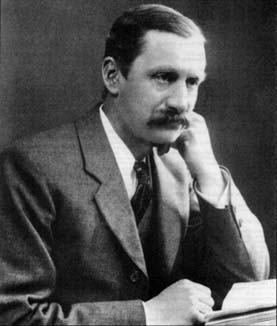William Burnside facts for kids
- This English mathematician is sometimes confused with the Irish mathematician William S. Burnside (1839–1920).
Quick facts for kids
William Burnside
|
|
|---|---|

William Burnside
|
|
| Born | 2 July 1852 London, England
|
| Died | 21 August 1927 (aged 75) West Wickham
|
| Alma mater | St John's College, Cambridge and Pembroke College, Cambridge |
| Known for | Burnside's lemma Burnside problem Burnside ring Burnside theorem Burnside normal p-complement theorem |
| Awards | Smith's Prize (1875) De Morgan Medal (1899) Royal Medal (1904) |
| Scientific career | |
| Fields | Finite group theory |
| Influenced | Philip Hall |
William Burnside (born July 2, 1852 – died August 21, 1927) was a brilliant English mathematician. He is best known for his important work on finite groups. Finite groups are like special sets of numbers or objects that follow certain rules when you combine them.
Burnside was born in London in 1852. He went to school at Christ's Hospital and later studied at the University of Cambridge. He was a very good student in mathematics. After finishing his studies, he taught at Cambridge for ten years. Later, he became a professor of mathematics at the Royal Naval College in Greenwich. Even though this was a bit away from the main math centers, Burnside kept doing a lot of research. He wrote over 150 papers in his lifetime!
Early Research and New Interests
At first, Burnside worked on applied mathematics. This type of math helps solve real-world problems. His early work was so good that he became a member of the Royal Society in 1893. This is a very important group for scientists in Britain.
Around the same time, Burnside became very interested in finite groups. This was not a popular subject in Britain back then. It took some years for people to fully understand how important his work in this area was.
Contributions to Group Theory
A big part of Burnside's work was about group representations. This is a way to understand groups by showing them as sets of special mathematical objects. He helped create some of the basic ideas for this field. Another mathematician named Ferdinand Georg Frobenius was also working on similar ideas at the same time.
One of Burnside's most famous discoveries is his paqb theorem. This theorem helps mathematicians understand certain types of finite groups. It shows that if a group's size is made up of only two different prime numbers, then it has a special structure called "solvable."
In 1897, Burnside published his famous book, Theory of Groups of Finite Order. This book became a standard guide for many years. The second edition, published in 1911, included new ideas about "character theory," which made the book even more useful.
Other Famous Problems and Awards
Burnside is also remembered for something called Burnside's problem. This problem asks how big a group can be if its elements (the things inside the group) behave in certain ways.
He also has a rule named after him, Burnside's lemma. This rule helps count how many different ways you can arrange things when you have a group of actions. Even though it's called Burnside's lemma, other mathematicians like Frobenius and Augustin Cauchy had found similar ideas earlier.
In 1901, he received an honorary doctorate from the University of Dublin. This is a special degree given to people who have done great things.
Beyond Mathematics
Besides being a brilliant mathematician, William Burnside was also a very good rower. While he was teaching at Cambridge, he even coached the university's rowing team. In fact, when he passed away, his obituary (a notice about his death) in The Times newspaper talked more about his sports career than his math! It called him "one of the best known Cambridge athletes of his day."
William Burnside passed away on August 21, 1927. He is buried at the West Wickham Parish Church in South London.
Books

